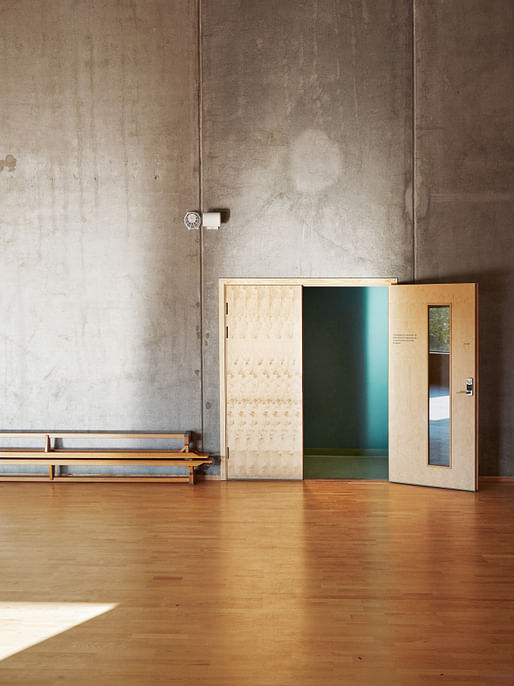
A new cultural and educational hub that draws from the heritage and traditional building practices of the Sámi peoples, an Indigenous group in Norway, designed by Snøhetta, in collaboration with Norwegian practice 70°N architecture and artist Joar Nango, has officially opened.
Called Čoarvemátta, the project takes its name from the Sámi words for horn and root, after the innermost and strongest part of reindeer antlers. The shared facility creates space for the Sámi National Theater Beaivváš and the Sámi High School and Reindeer Herding School.
The building is located in Kautokeino, a municipality in the middle of Finnmarksvidda, Norway’s largest and northernmost plateau. Čoarvemátta’s design responds to its environment as all the structure’s façades relate to the various landscape spaces that surround them.
The two-story building sits low in the landscape with proportions that harmonize with the surrounding hills and elevations. It avoids sharp angles, maintaining an organic congruence with the natural surroundings. The roof slopes on both sides, minimizing the building’s height effect when seen from a distance, while also forming an entry point on the southwest side.
Čoarvemátta has a branching shape, with the main entrance and vestibule located at its center. This creates a gathering place for both school’s and the theater’s users. From here, the building body stretches in three directions, with one wing for the theater, workshops and teaching rooms, and the school’s administration.
The facility’s curved lines, the skylights in the vestibule, and the visible load-bearing timber structure in wood are inspired by wooden structures typical of Sámi reindeer herding areas.
The branching shape naturally forms three outdoor spaces. The one facing south features the main entrance, which also includes a fire pit, sitting stones, and an amphitheater. The outdoor area on the other side of the theater wing is intended for the school’s building trade workshops. On the east side, the plateau connects to the building as the terrain and vegetation have been preserved as close as possible to the building. To the north of Čoarvemátta, large areas were set aside for reindeer fences, which are linked to the school’s reindeer herding department.
The building’s façade is made of standing wood clad in ore pine. The roof, which measures approximately 53,000 square feet, is clad with roughly 111,500 feet of kebony. In addition, the Alta slate stone on the theater’s gable wall was reused from the village’s old primary school.
Inside the vestibule and corridors, polished concrete floors mimic the ground outside the building, with elements of locally mined stone. The center of the building is painted in warm, red shades.
The color scheme becomes cooler as you move away, resulting in bluish tones at each end of the building’s wings.

References to the Sámi use of color have been made through the contrasts between door, wall, and floor within the different color schemes. Snøhetta also developed the space’s signage and wayfinding program, which has subtle references to traditional craftsmanship and use of materials.
Čoarvemátta employs passive design strategies. The building is 90% self-sufficient in energy to heating and cooling through 40 geowells drilled about 820 feet into the ground. Other eco-friendly practices include the preservation of the soil that was removed from the site during construction.
A total of six new works of art were created for the project, in addition to two existing works by some of the region’s most famous and influential artists.
No Comments
Block this user
Are you sure you want to block this user and hide all related comments throughout the site?
Archinect
This is your first comment on Archinect. Your comment will be visible once approved.